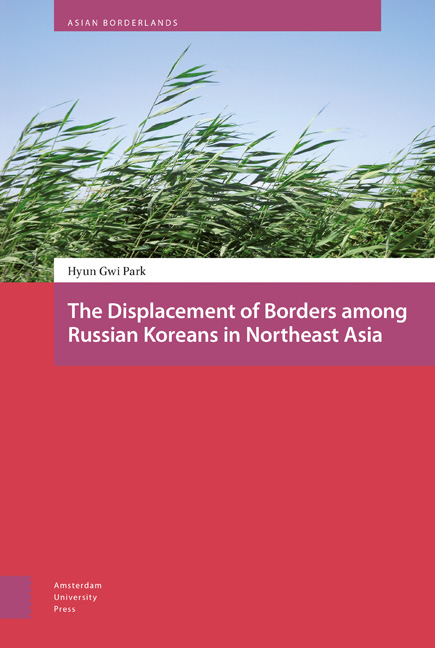Book contents
- Frontmatter
- Dedication
- Contents
- List of Maps, Figures and Tables
- Acknowledgements
- Note on transliteration, translation, and names
- Preface: Clearing the Ground
- Introduction: the Obscure Presence of Russian Koreans in Northeast Asia
- 1 The History of âthe Korean Questionâ and Border-Making in the Russian Far East
- 2 Repatriating to the Russian Far East, Confronting the Transition
- 3 Living Soviet Socialism the Korean way: Mobile Agriculture at the Border of Socialism
- 4 Greenhouse Society: the Subsistence Economy and Householding
- 5 Recalling History: Koreiskii Dom, Transnational Connections, and Diaspora Politics
- Epilogue
- Appendix 1
- Appendix 2
- Glossary
- Bibliography
- Index
2 - Repatriating to the Russian Far East, Confronting the Transition
Published online by Cambridge University Press: 12 February 2021
- Frontmatter
- Dedication
- Contents
- List of Maps, Figures and Tables
- Acknowledgements
- Note on transliteration, translation, and names
- Preface: Clearing the Ground
- Introduction: the Obscure Presence of Russian Koreans in Northeast Asia
- 1 The History of âthe Korean Questionâ and Border-Making in the Russian Far East
- 2 Repatriating to the Russian Far East, Confronting the Transition
- 3 Living Soviet Socialism the Korean way: Mobile Agriculture at the Border of Socialism
- 4 Greenhouse Society: the Subsistence Economy and Householding
- 5 Recalling History: Koreiskii Dom, Transnational Connections, and Diaspora Politics
- Epilogue
- Appendix 1
- Appendix 2
- Glossary
- Bibliography
- Index
Summary
Primorskii Krai is a land of wind and fog; The wind blows in And suddenly the fog rises. Living in this land one Appears quietly and then disappears, Reappearing undetected.
An anonymous former resident of Primorskii KraiAs we have seen in the previous chapter, there were not supposed to be any Koreans in the RFE following their forced relocation to Central Asia by the Soviet authorities in 1937. However, as James C. Scott (1998) convincingly argues, grand designs by states (such as the mass relocation of populations and large-scale development projects) often do not fully achieve their aims: there are always holes, gaps, and unexpected outcomes due to local practices and human nature. After their forcible relocation to Central Asia, there was a brief period when Koreans were to all intents and purposes absent from the RFE,1 but they soon began to reappear due to migration from North Korea following Korea's liberation from Japanese colonialism in 1945 and from Central Asia following Stalin's death in 1953.
In other words, Koreans have exhibited a tenacious connection to this land despite the Stalinist attempt to ‘cleanse’ the region. Although more thorough historical research on Koreans in the RFE during the period between the Stalinist purge and the death of Stalin is needed, this chapter discusses the repatriation of Koreans from Central Asia to the RFE since 1956, when the residence restrictions on Koreans were lifted in the Soviet Union. There have been two large-scale repatriations of Koreans from Central Asia: one following the ‘rehabilitation’ of Koreans in the mid-1950s, and the other in the post-Soviet period in the 1990s. I discuss both in this chapter, although most of my ethnographic material relates to the more recent migration, as does my analytical engagement with the literature on this so-called ‘ethnic migration’ and my discussion of exclusionary practices towards the migrants.
One of the characteristics of the explosive growth in migration following the collapse of the Soviet Union is that people have appeared to move as homogenous groups, a phenomenon that has often been termed etnicheskaia migratsiia (‘ethnic migration’) (Panarin, 1999; Pilkington, 1998; Vaschuk et al., 2002). The fact that this migration was caused by the outbreak of autochthonous nationalism and violent civil wars in the CIS countries has reinforced the specifically ‘ethnic’ character of this movement, in which people of certain nationalities were forcibly displaced from their places of residence.
- Type
- Chapter
- Information
- Publisher: Amsterdam University PressPrint publication year: 2017



